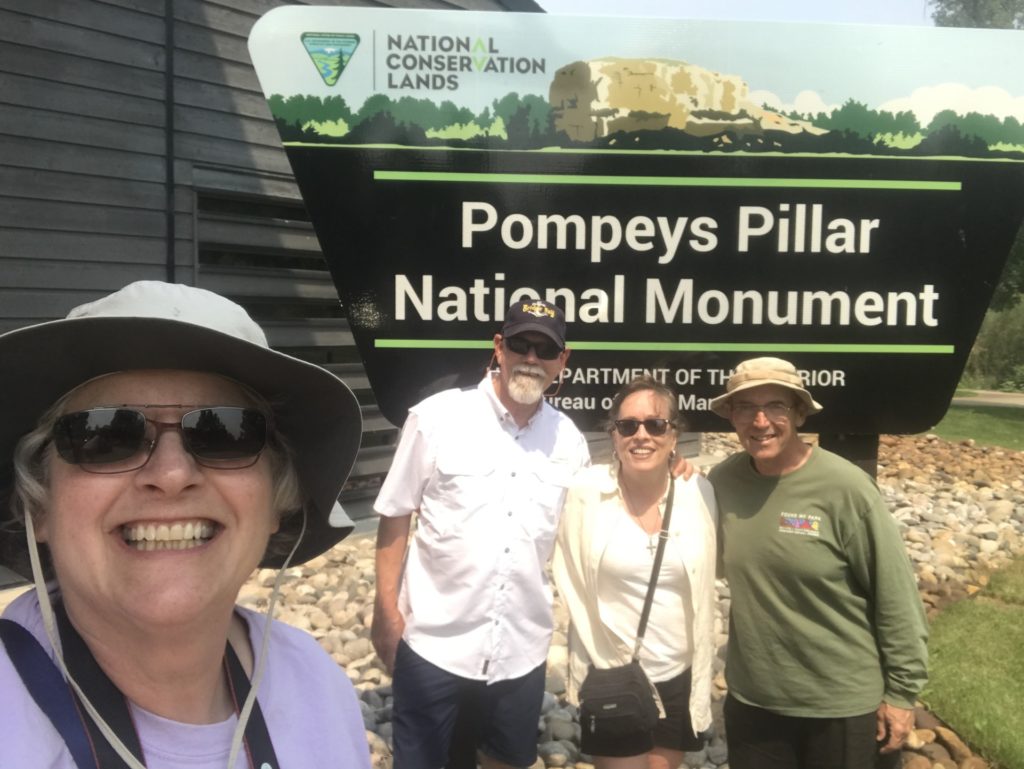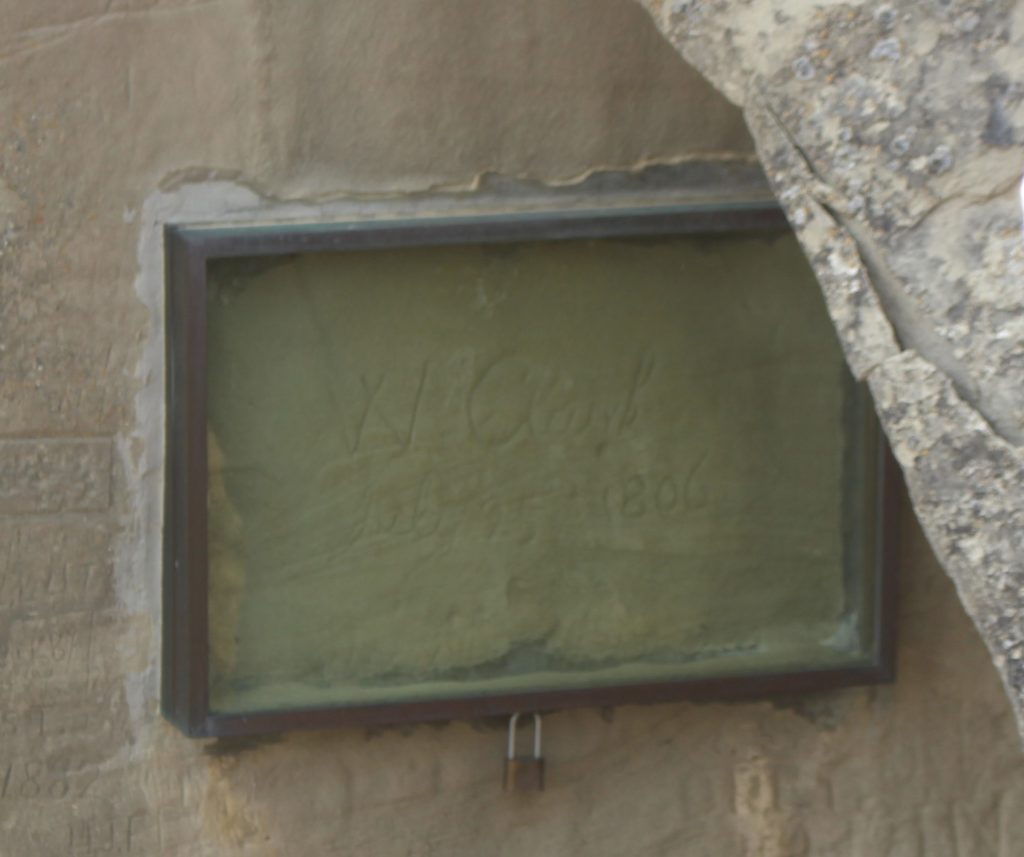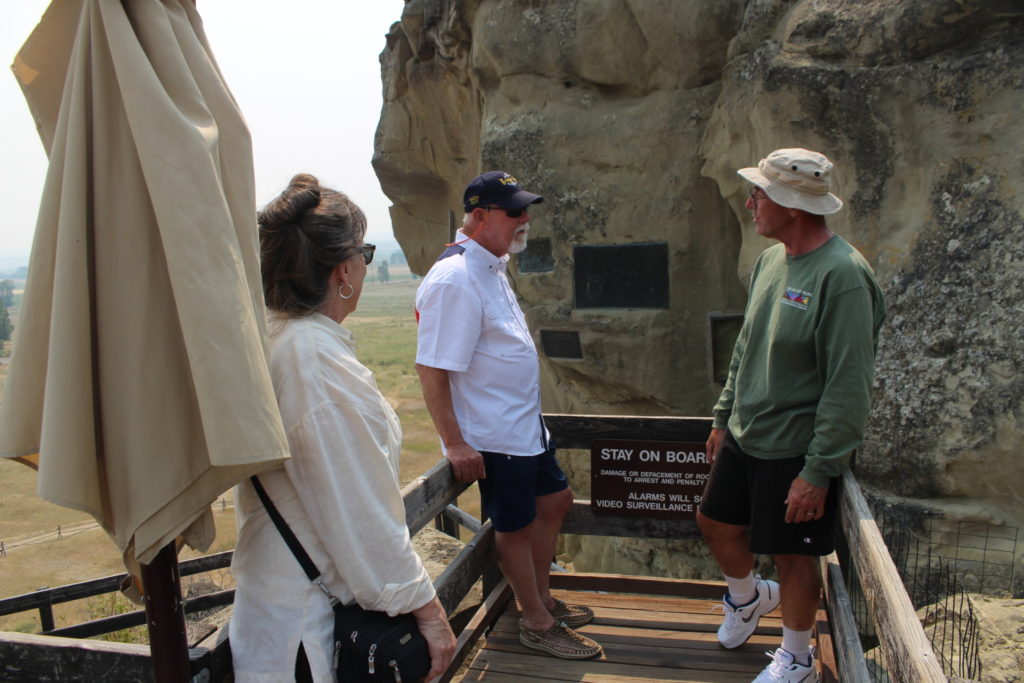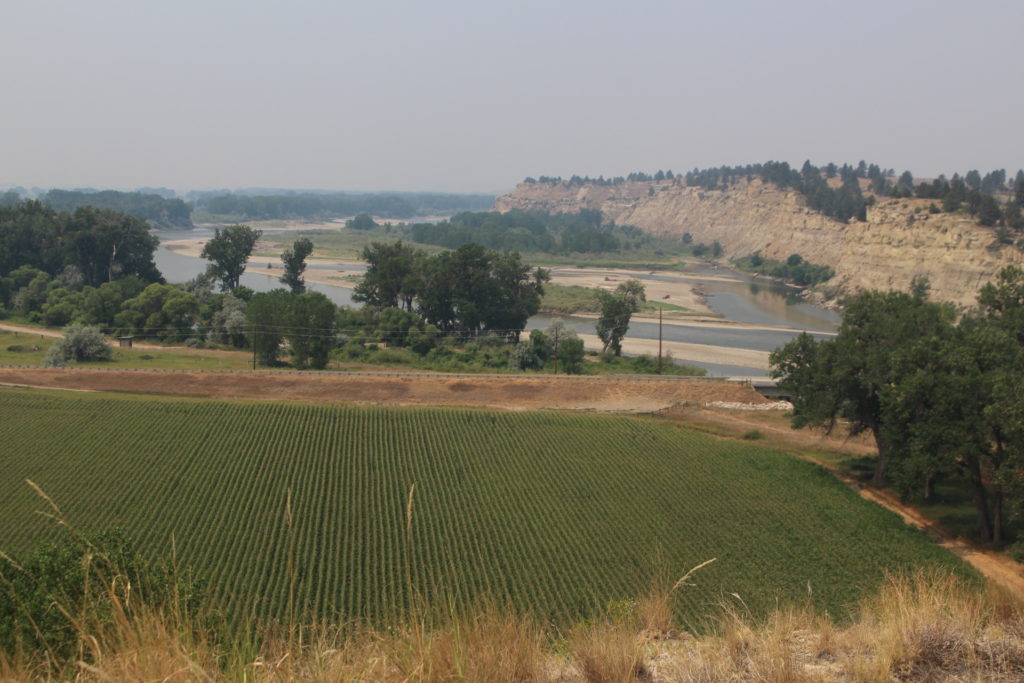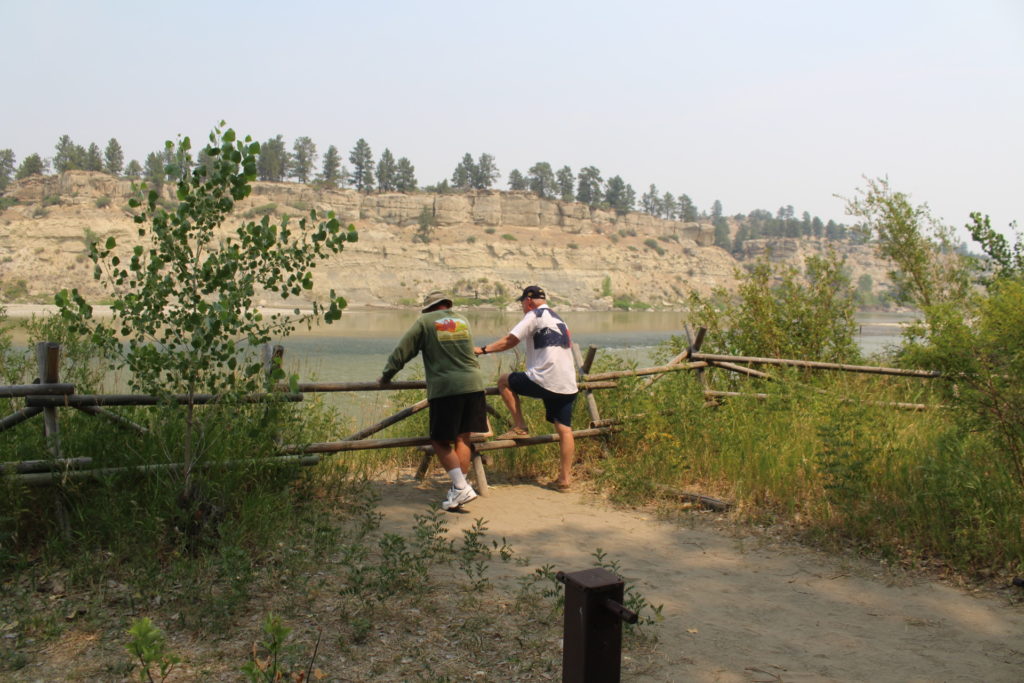A couple of weeks ago Tom and I met Johnny and Val Johnson at Pompeys Pillar National Monument near Billings, Montana. If you are a long-time reader of the blog, you might remember Johnny and Val from the seasons we worked at Grand Portage or San Juan Island. We haven’t seen them for three years, but this summer they are working at Yellowstone National Park so we made plans to meet halfway between Yellowstone and Fort Union. Billings was our middle.
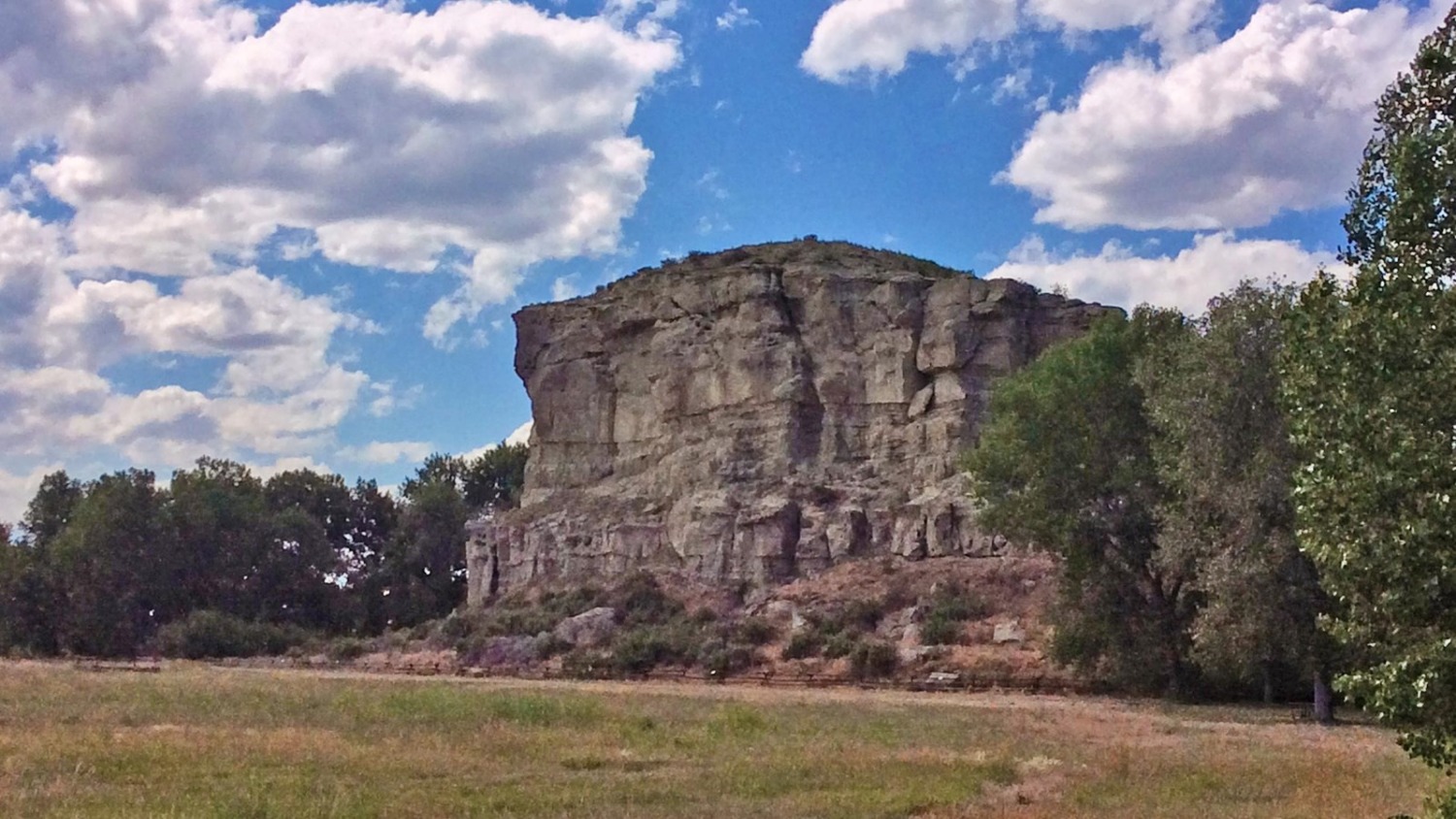
Pompeys Pillar National Monument is the first thing we did together. Tom and I had been there before but Johnny and Val had never seen it. Pompeys Pillar is a rock that sticks up next to the Yellowstone River. The main reason it is notable is because William Clark (of Lewis and Clark fame) signed the rock when he was heading back east. It is the only physical evidence of the expedition left along the entire trail.
The Lewis and Clark National Historic Trail is very big here in North Dakota and Montana. We get a lot of visitors at Fort Union Trading Post who are traveling and learning about the trail. Although Fort Union Trading Post was not built until 1828 and the expedition came through in 1806, the Corps of Discovery went right by the site of the trading post as they traveled up the Missouri River.
Pompeys Pillar is a small but interesting site, administered by the Bureau of Land Management. They maintain the rock and the signature and have a very good information center and museum. There is a fee to get in, waived if you have one of the National Park passes. The fee goes toward maintenance of the buildings and stabilization of the rock.
The pillar itself is a massive sandstone outcropping, two acres in diameter and 120 feet high. Because it is the only sandstone outcropping in the area, it has been used as a landmark by Native Americans and other travelers for centuries. There are pictographs on the rock, although they are not as well preserved as William Clark’s signature.
A very nice boardwalk leads up the outcropping. We climbed up and viewed the signature, then climbed to the top and enjoyed the view. You can see a long way over the Yellowstone River Valley from the top. In fact, I took a bunch of pictures of the valley and totally forgot to take a picture of the pillar itself. We also walked along a shaded trail by the Yellowstone River. It was lovely and relatively cool since it was one of those scorching days over 100.
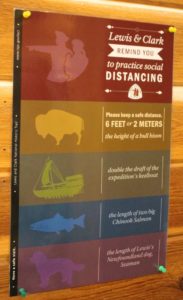
We really enjoyed the pillar and the walk along the river, but we were glad to get back in the air-conditioned Visitors Center. We watched a movie on Clark’s stop at Pompeys Pillar (named after the nickname of the son of Sacagawea). Tom and Johnny spent some time studying and talking about the bullboat, which Tom and Ranger Karl would love to make this summer at Fort Union. My favorite thing in the Visitors Center was the social distancing sign where “Lewis and Clark remind you to practice social distancing.”
Pompeys Pillar is a very interesting site to visit and is just off I-94 about 30 minutes east of Billings. It is a very accessible piece of history.

